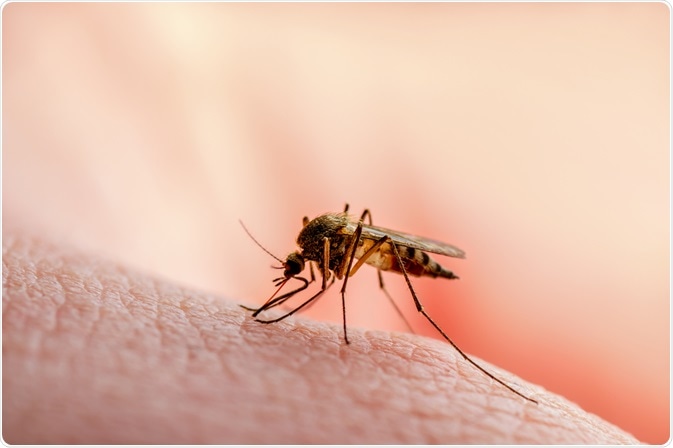Bucking global trends, Malaria cases and deaths have continued to decline in India. What is behind India’s success story? How does climate change play a part? Why is there a need for improved surveillance? And what are the challenges ahead?

The recently released World Malaria Report shows that the number of cases and deaths due to the mosquito-borne infection India have continued to decline. With an estimated 33.8 lakh cases and 5,511 deaths, India saw a decline of 30 per cent in malaria incidence and 34 per cent in mortality in 2022, compared to the previous year.
India’s downward trend was reflected in the larger WHO South East Asian region that remained on track to achieving the 2030 target of reducing cases and deaths by 90 per cent, the report said.
This is, even as since the beginning of the pandemic, a trend of increasing incidence has been noted globally, after nearly a decade of the numbers remaining almost the same.The number of malaria cases had dropped from 243 million to 233 million globally between 2000 and 2019. However, there was an increase of 11 million cases in 2020. They remained stable in 2021, before seeing another increase of 5 million in 2022 to 249 million. The number of malaria deaths also remained higher than the pre-pandemic levels. There were 608,000 deaths reported in 2022 as compared to 576,000 cases in 2019.
Behind India’s success story
A focus on providing primary healthcare to the remotest areas, surveillance that is now being backed by digital data, and better handling of extreme weather events such as cyclones have been key to India’s success as per experts.Good preventive practices, use of effective tools to keep the mosquito population in check, use of point of care tests for quick diagnosis, and good management of the malaria cases have been key to reducing cases and deaths due to malaria over the years, said Dr Neena Valecha, former director of National Institute of Malaria Research, who also served as the advisor on malaria to the WHO-Southeast Asia region previously.Dr Prateek Sarkar, former India country director for Malaria No More, said: “There has been a lot of investment in insecticide mosquito nets, antimalarial drugs, and point of care tests to quickly detect the disease. Urbanisation also reduces incidence of malaria by reducing breeding grounds for most mosquitoes that spread the disease.”
He added that states such as Odisha that regularly see extreme weather events such as cyclones are now well prepared to handle it, thereby reducing incidences of malaria associated with such events.
Climate change and malaria
The malaria parasite and mosquito are both extremely sensitive to temperature, humidity, and rainfall, leaving experts worried about expanding reach of the disease. The report says that climate change can not only directly increase geographies for malaria spread, but also indirectly affect the impact of the disease by reducing access to healthcare facilities and timely treatment.
Dr Sarkar said: “Climate change is likely to lead to an increase in temperatures, with newer areas especially in the Himalayan belt suitable for the spread of the disease. High risk zones will also emerge in states that face very high rainfall periodically.” He said that planning for the disease should also take into account such extreme weather events as better planning for them can reduce incidence of malaria.
Almost half of the five million additional malaria cases reported globally in 2022 — 2.1 million — were from Pakistan that witnessed an extreme flood. The report said that the standing water after the floods became ideal breeding ground for mosquitoes and led to a five-fold increase in malaria cases in the country. “The floods destroyed infrastructure and isolated millions, hindering medical access and increasing disease risk,” it said.
With increasing frequency of such extreme weather events, the annual report for the first time focused on climate change and malaria.
Need for improved surveillance
With fewer cases being reported from the country, there has to be intensified efforts to find and treat the scattered cases. “When the burden of disease is higher, any intervention in areas reporting most of the cases results in drastic reduction in numbers. However, when the numbers go down, the cases are scattered and difficult to find. This is where the role of surveillance comes in,” Dr Sarkar said
He added that it was important to have real-time digital data of these cases to help local administrations better plan the interventions.
Challenges ahead
While India is doing well when it comes to malaria, issues such as resistance may derail it from its target of elimination by 2030. “The biological threats include drug resistance, insecticide resistance, gene deletions in parasites which make diagnosis difficult,” said Dr Valecha.
Another challenge is vivax malaria, which accounts for over 40 per cent of malaria cases in India. The vivax plasmodium is known to hide in the liver and cause recurrent infections. To treat, a 14-day course of therapy has to be taken. Experts say the challenge with that is many do not complete the treatment and stop taking the drug once they feel better.
Dr Valecha added: “The last mile is always the most difficult. To achieve the malaria elimination target of 2030, there has to be emphasis on strengthening of surveillance as well as tailoring of malaria interventions at sub-national level which should be data driven. In addition updating policies and adopting new tools as per national and subnational need in line with WHO guidance is critical.”







